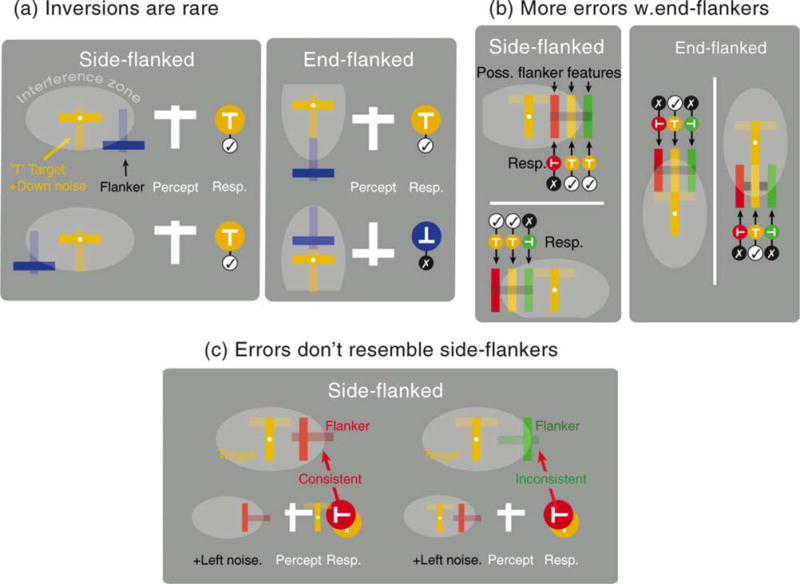Figure 7.

Why does the PAPA model work? (a) Under averaging of target and flanker feature positions, inversions of an upright T target can only arise when the horizontal stroke of the flanker falls well below its center. Such features are unlikely to fall within the elongated interference zones surrounding the target, making target inversions rare. (b) For an upright T target, most erroneous reports are ±90° rotations. Elongation of the interference zones means that bigger offsets of the vertical flanker feature (which drives ±90° target rotations) always interfere with end flankers but can fall outside the interference zone with side flankers (leading to fewer errors). In both (a) and (b) note the stronger correlation of flanker structure with response category in end- but not side-flanked conditions. This means that proportionally more of the erroneous reports in side-flanked conditions are due to random positional noise. (c) Early positional noise can lead to errors that are inconsistent with the flanker. In the left condition, a leftward-pointing flank has left noise added: the resultant average of target and flanker is consistent with the flanker. In the right example, a rightward-pointing flanker is corrupted by noise to become left-facing. Under averaging this leads to a leftward report that is inconsistent with the original flanker orientation.
